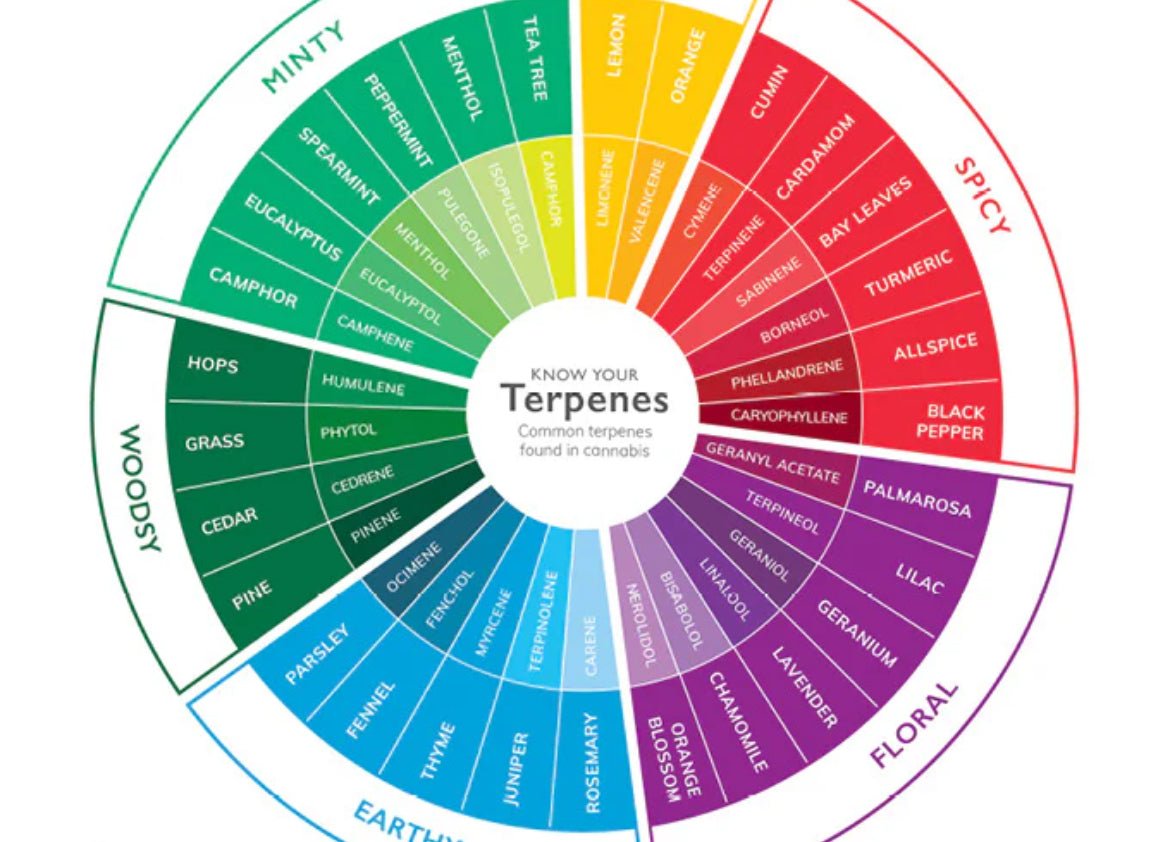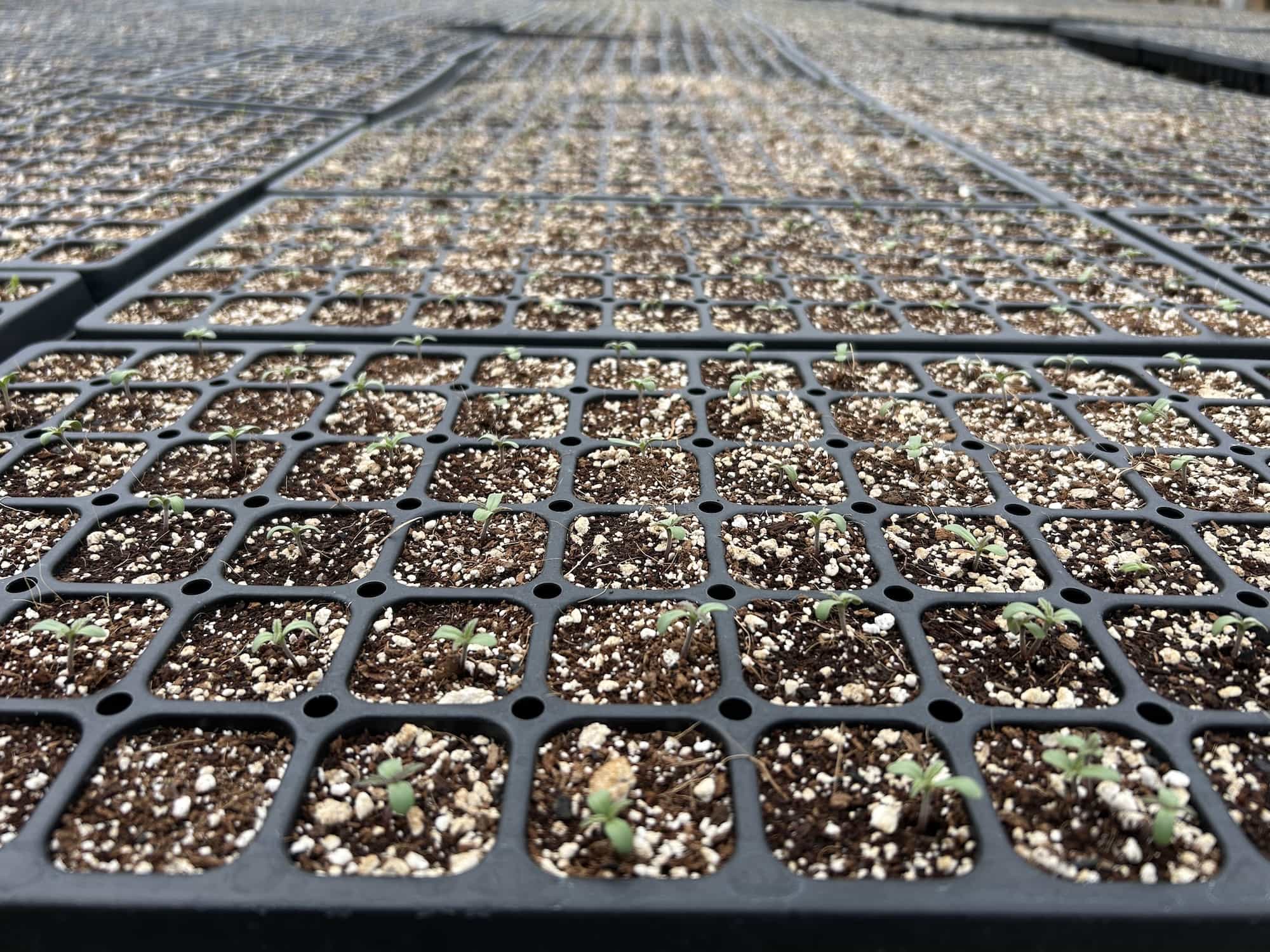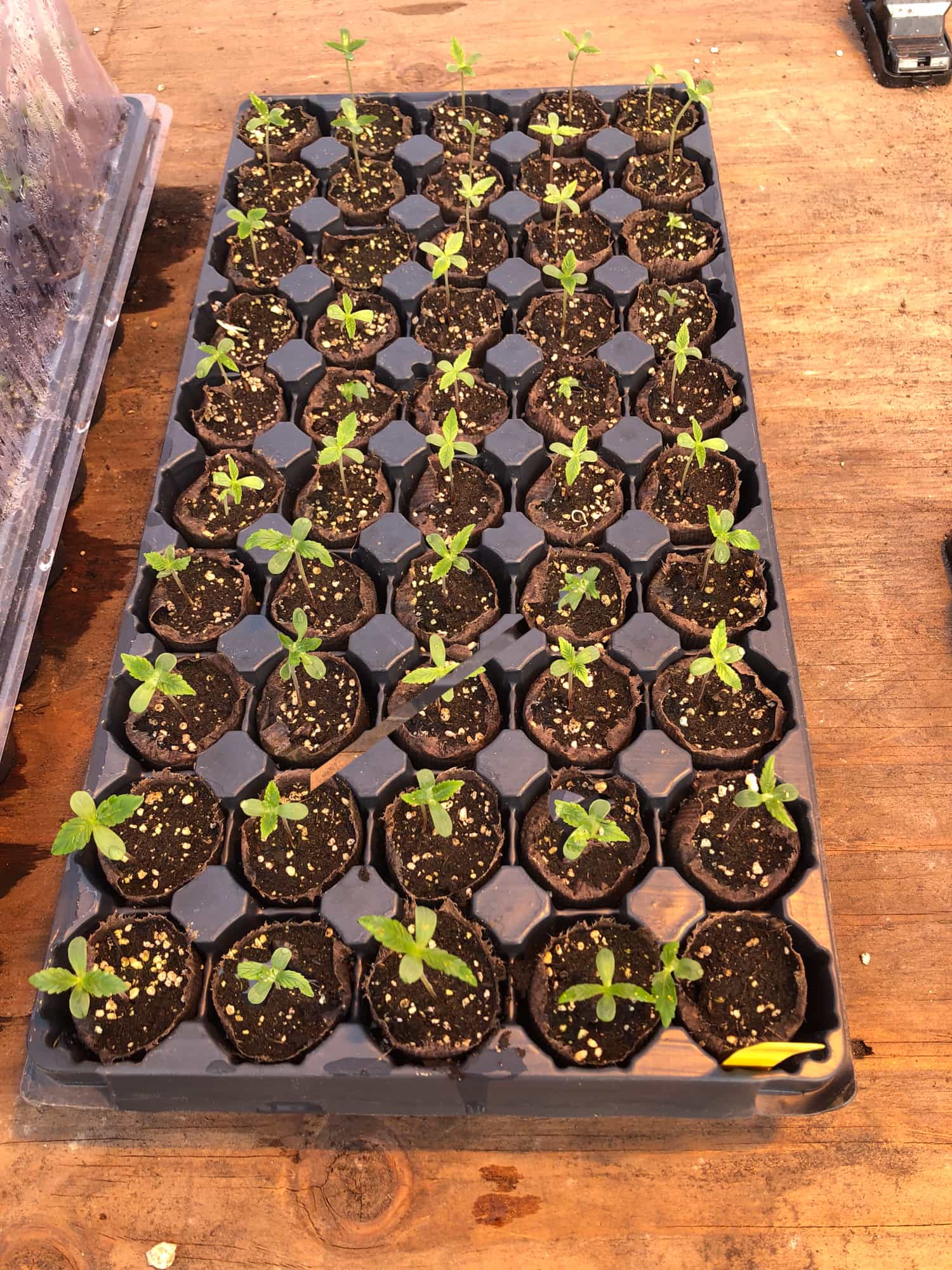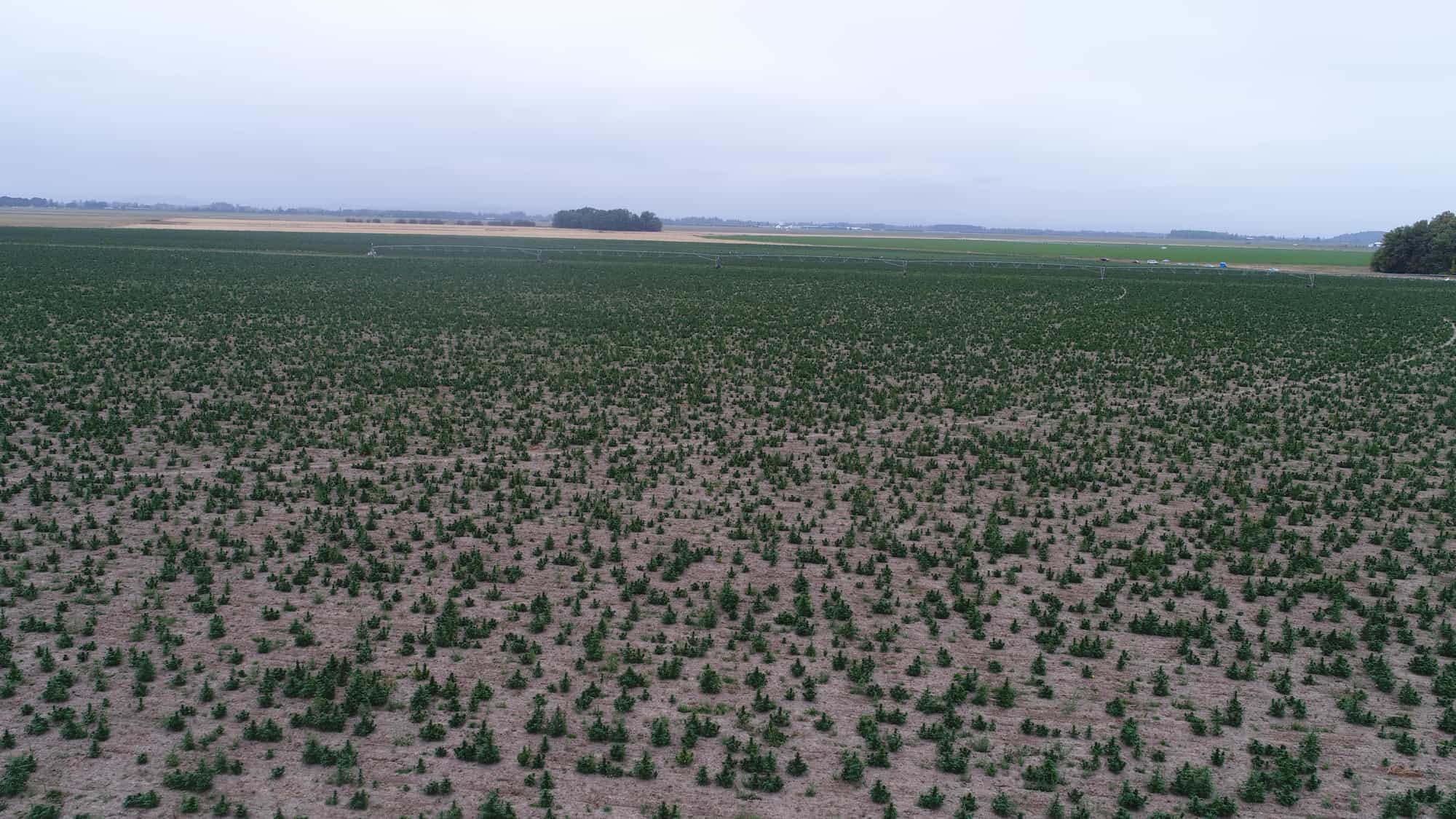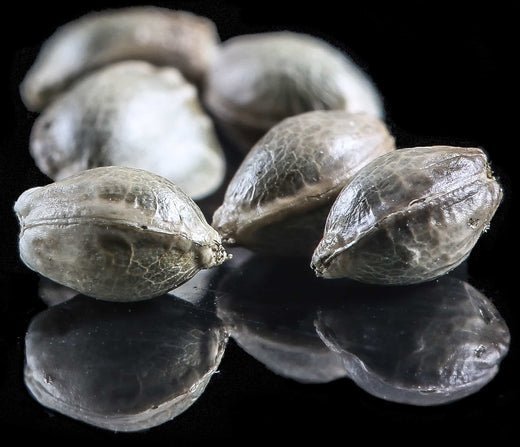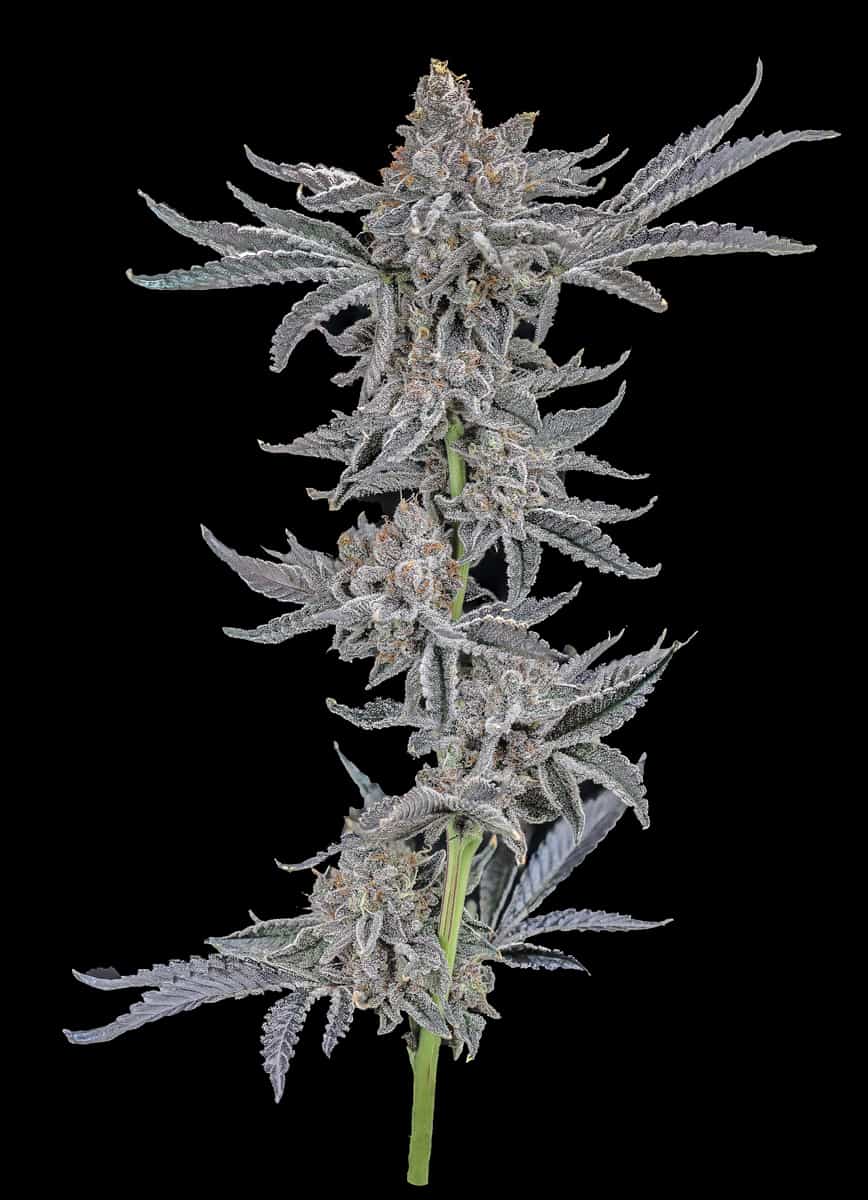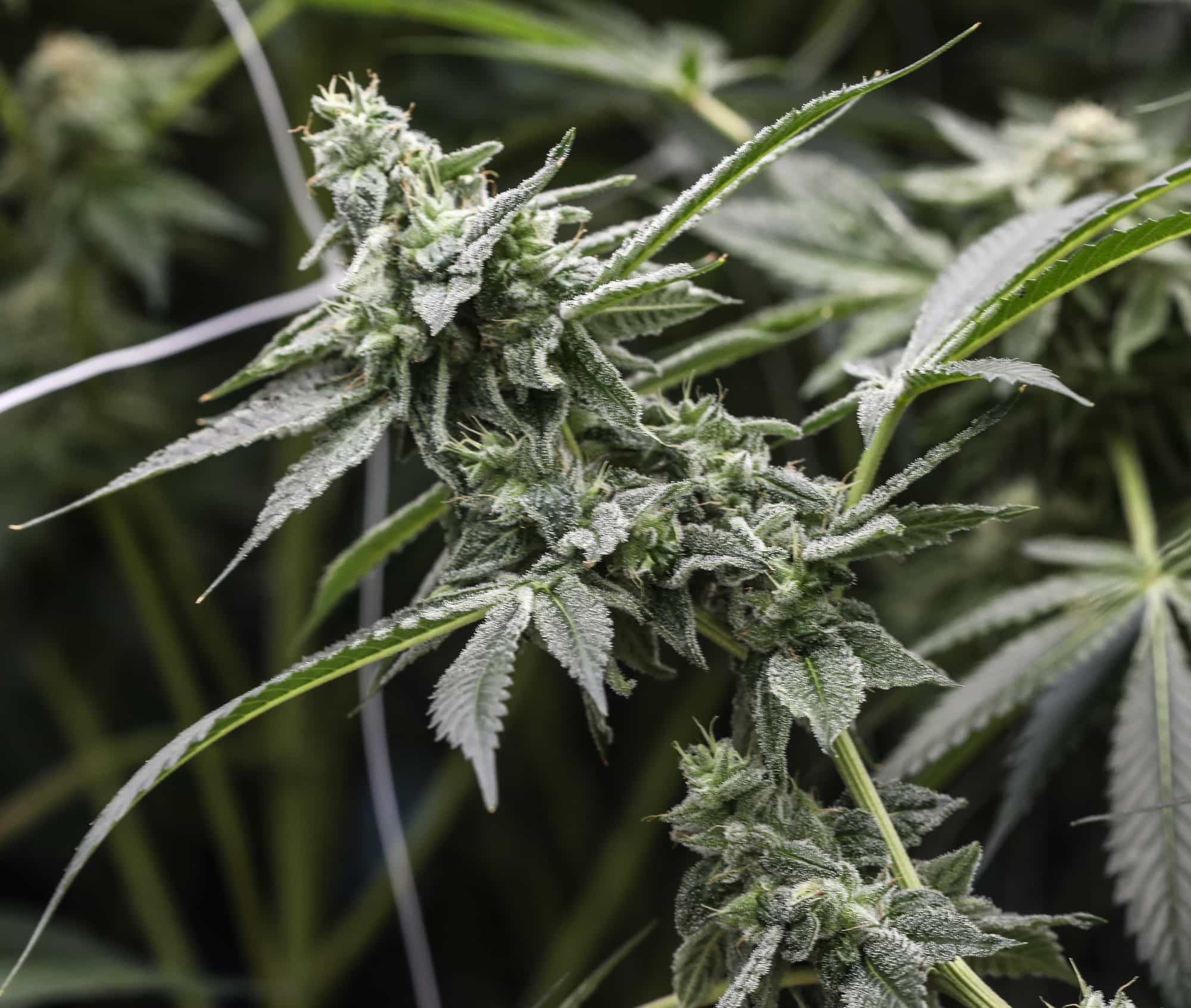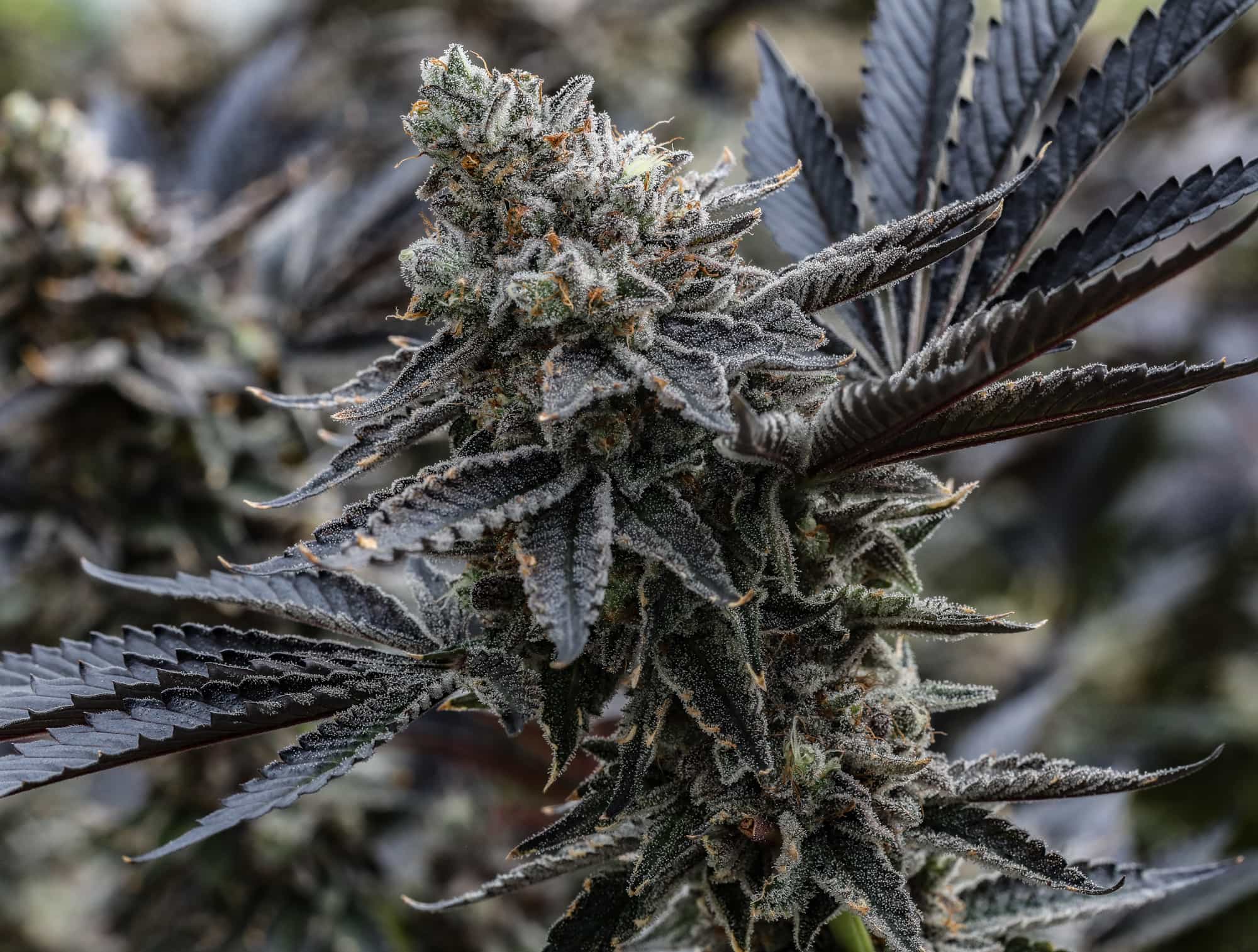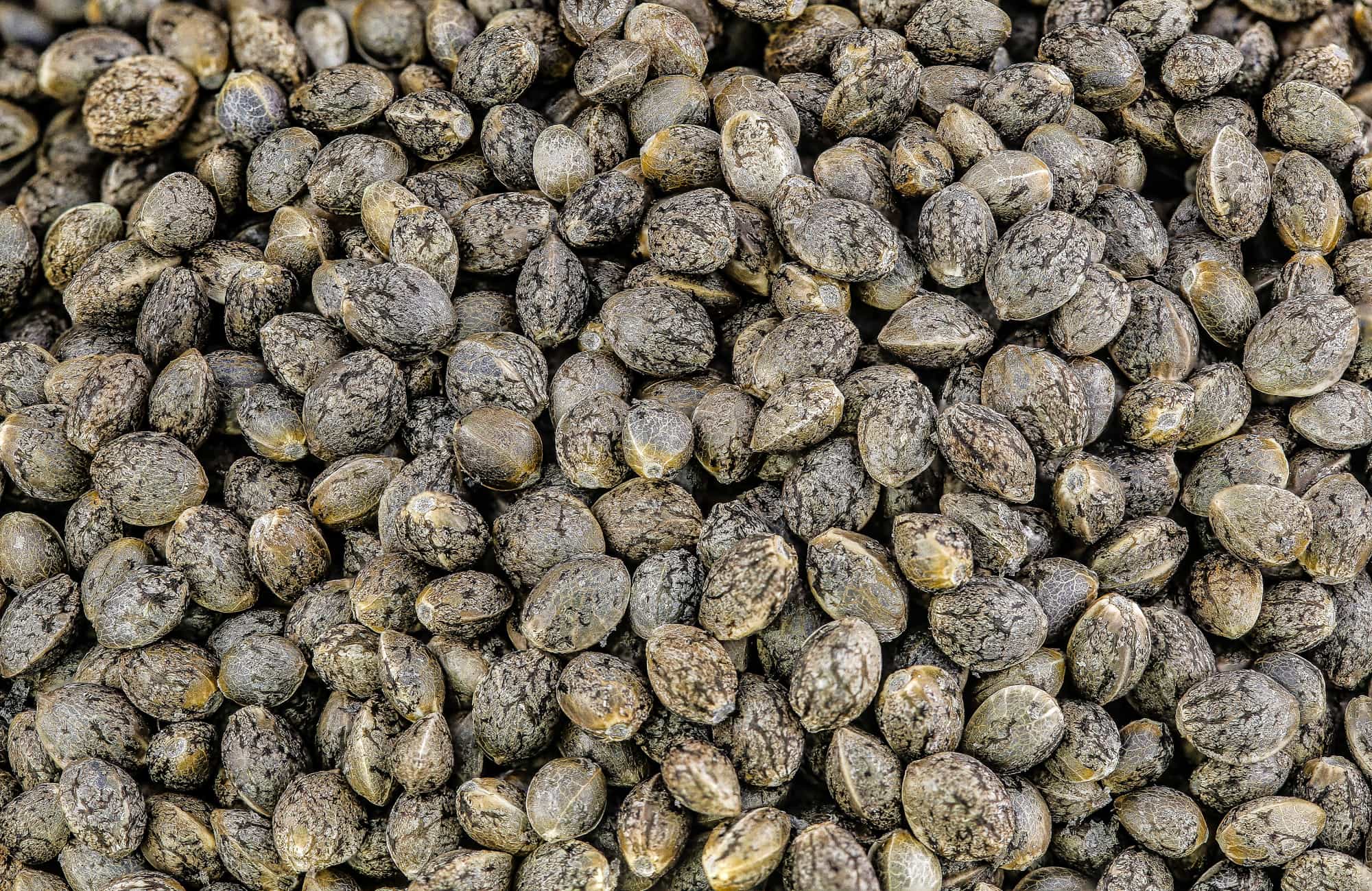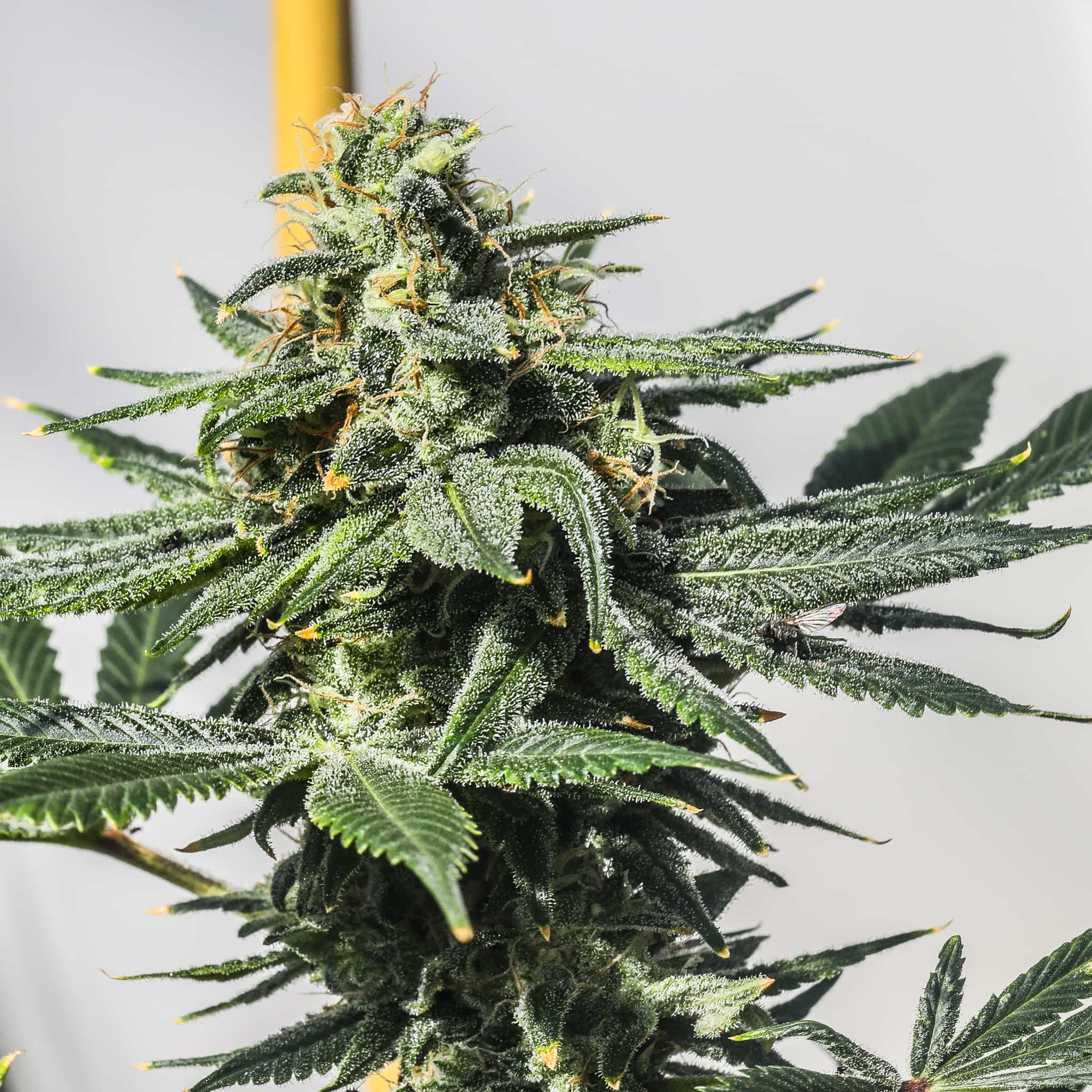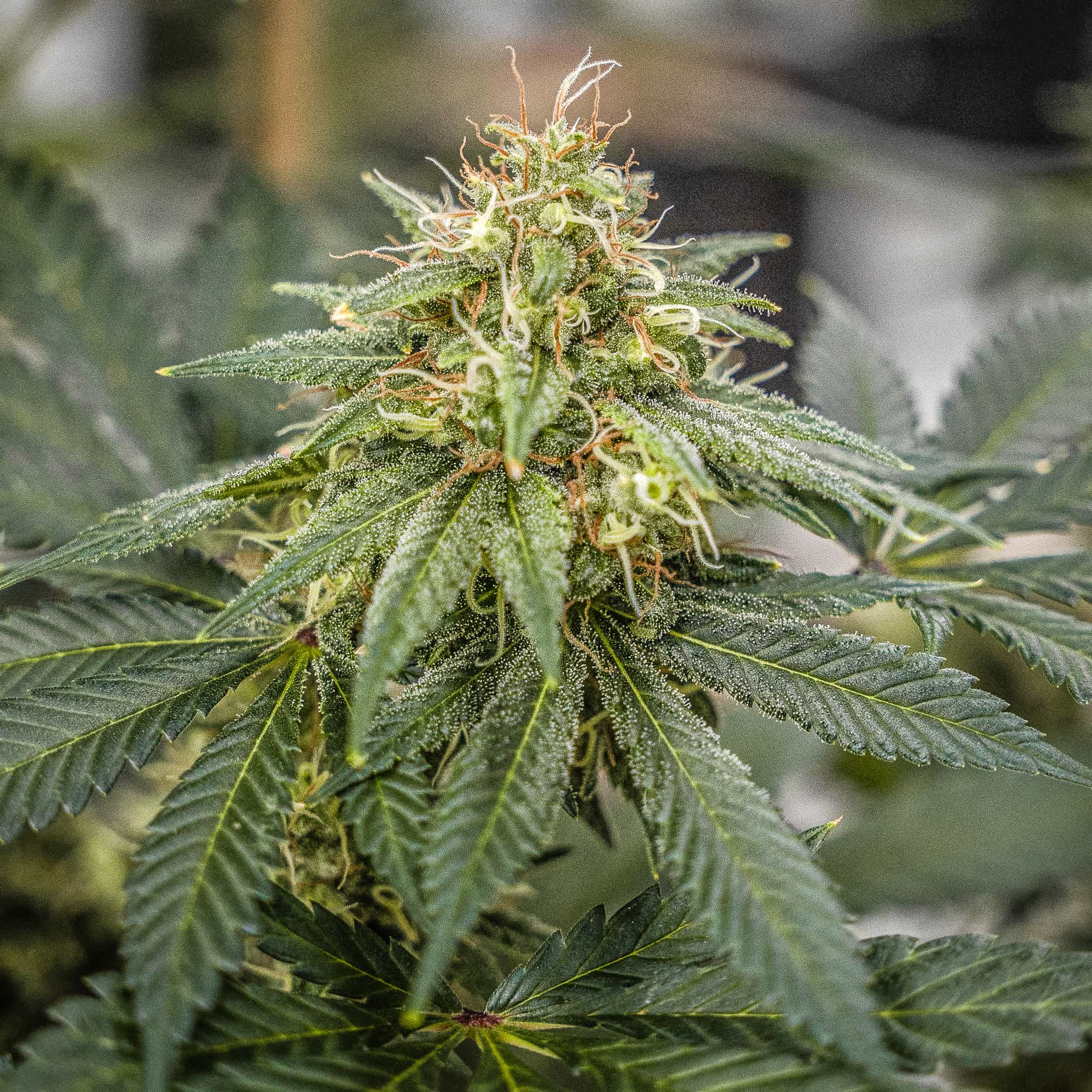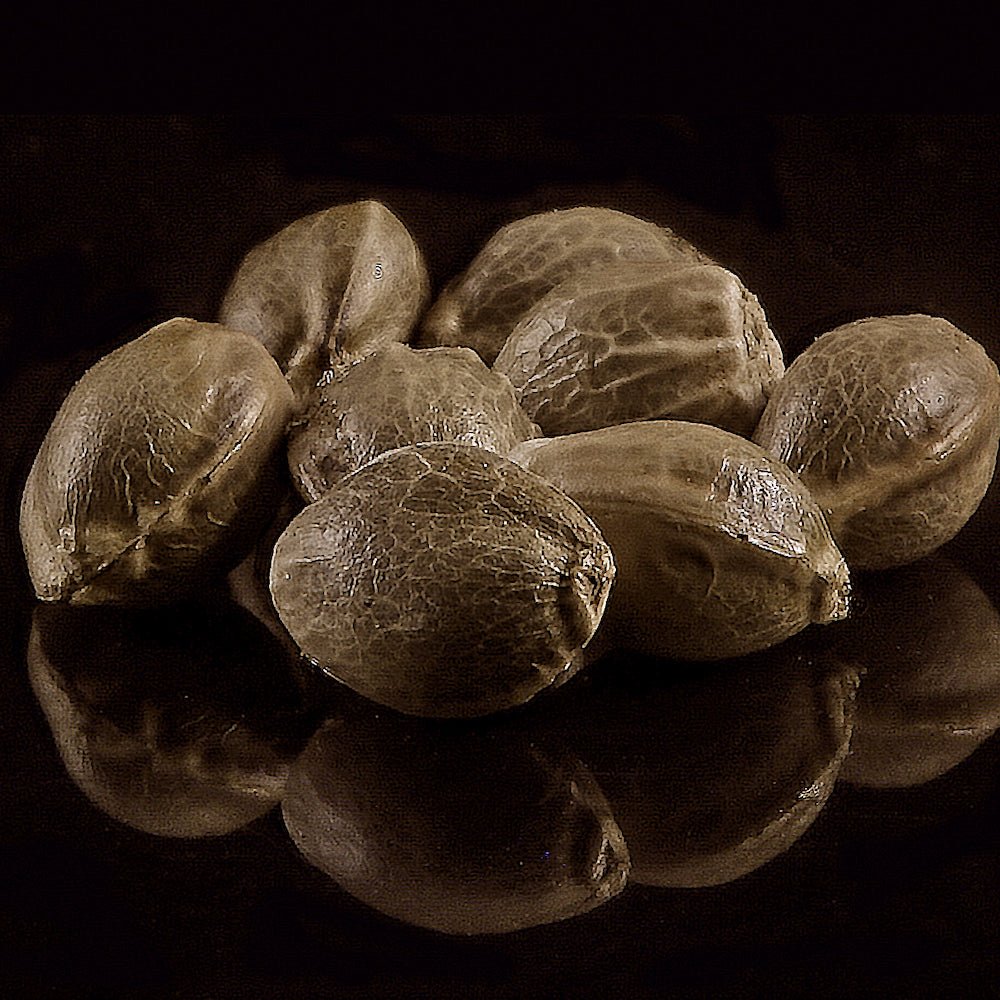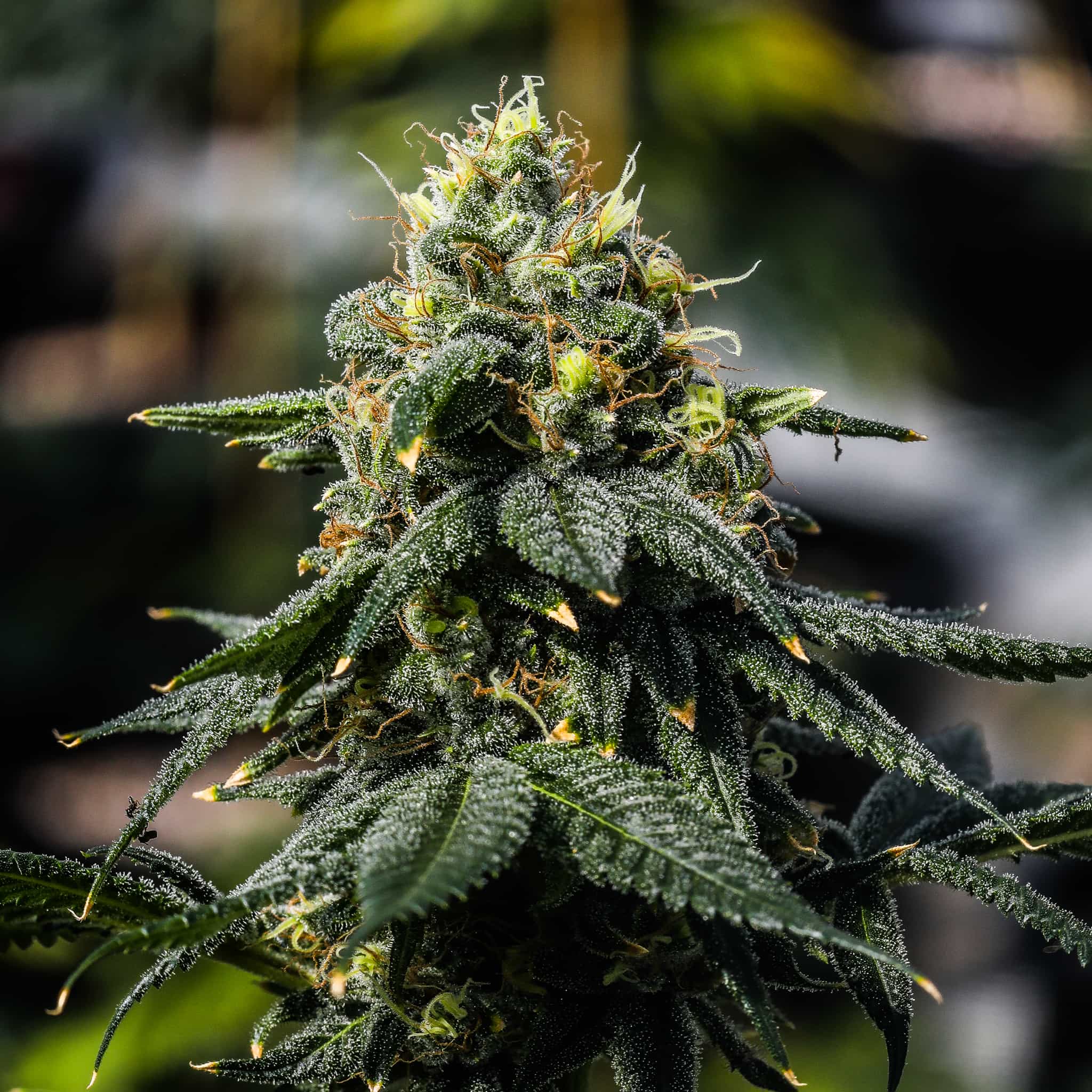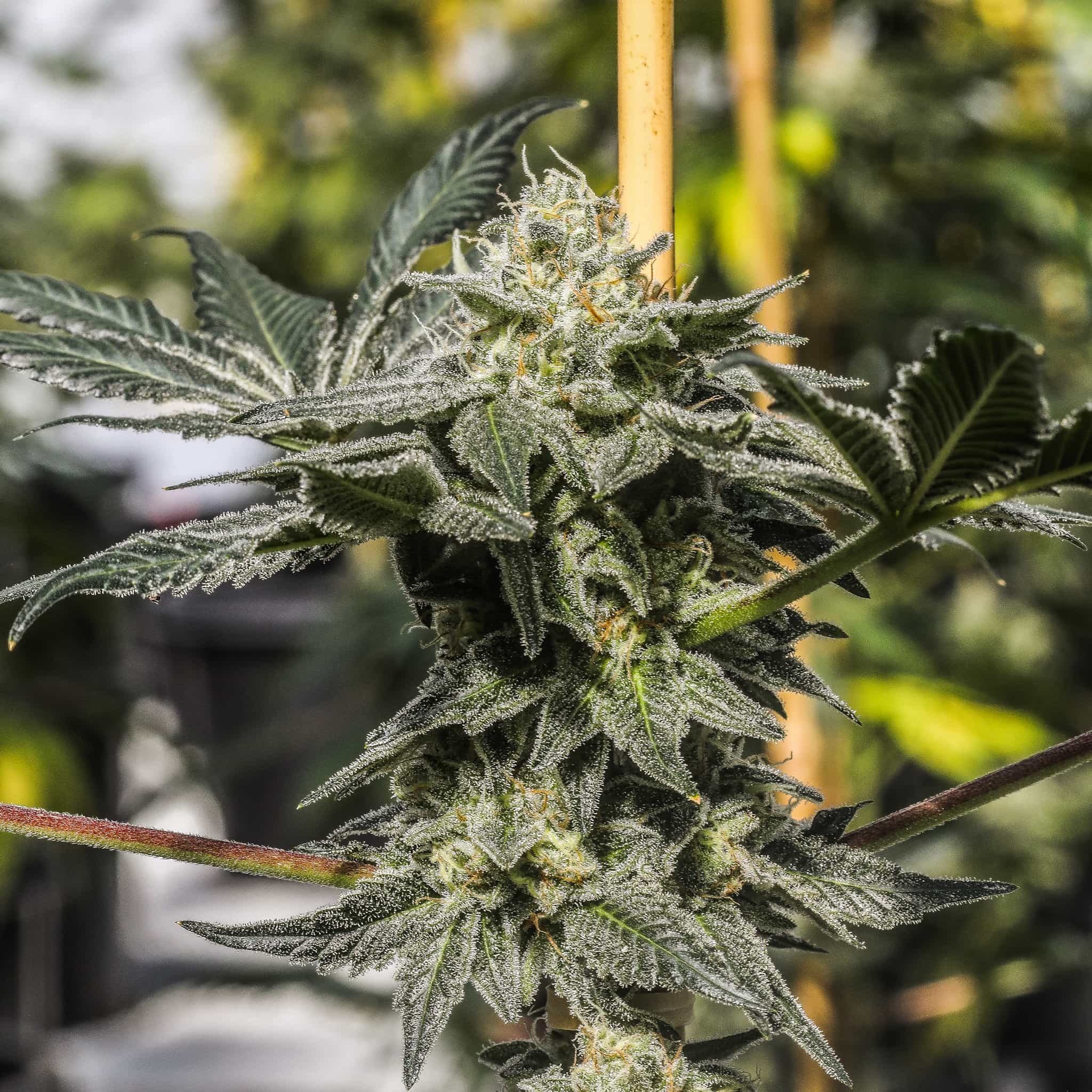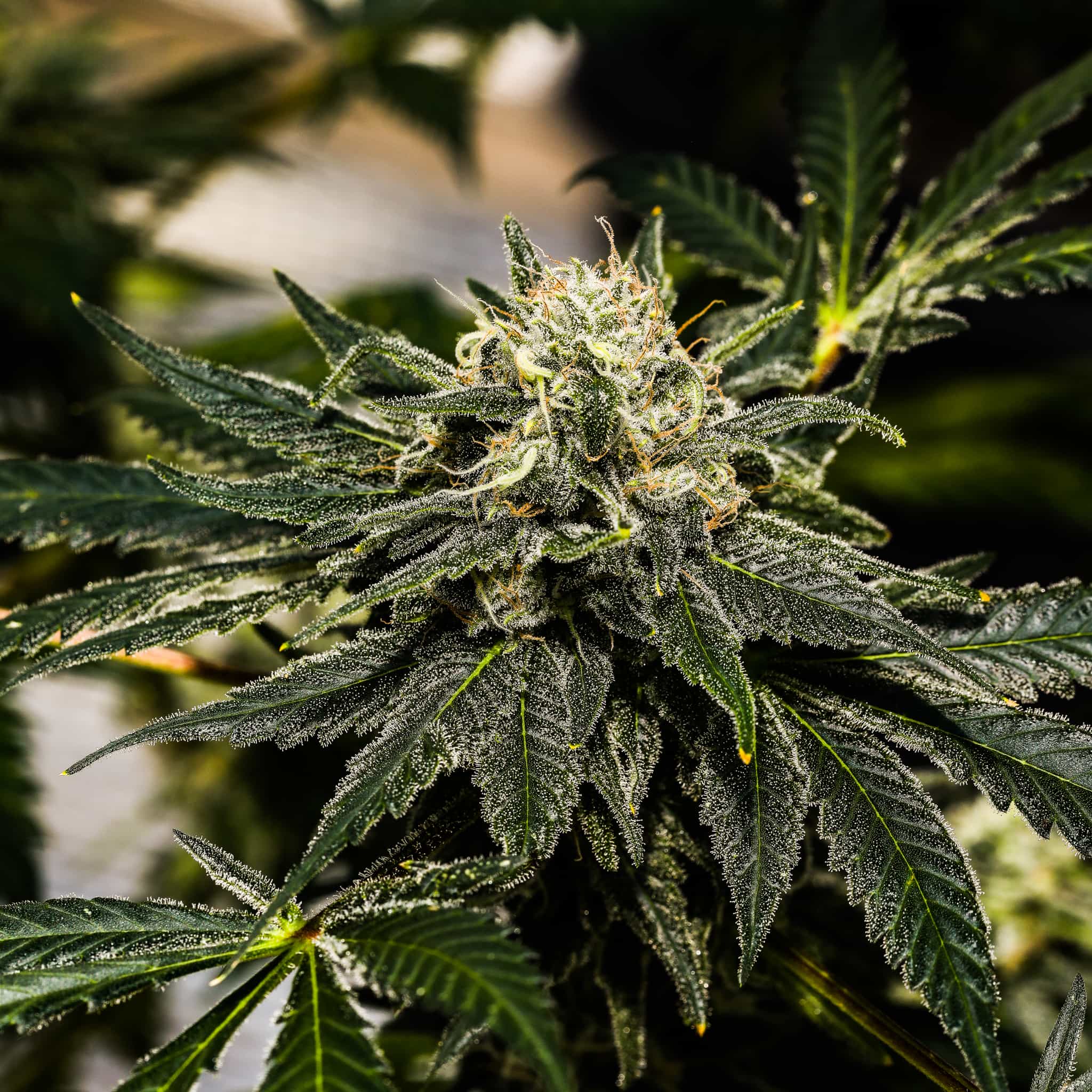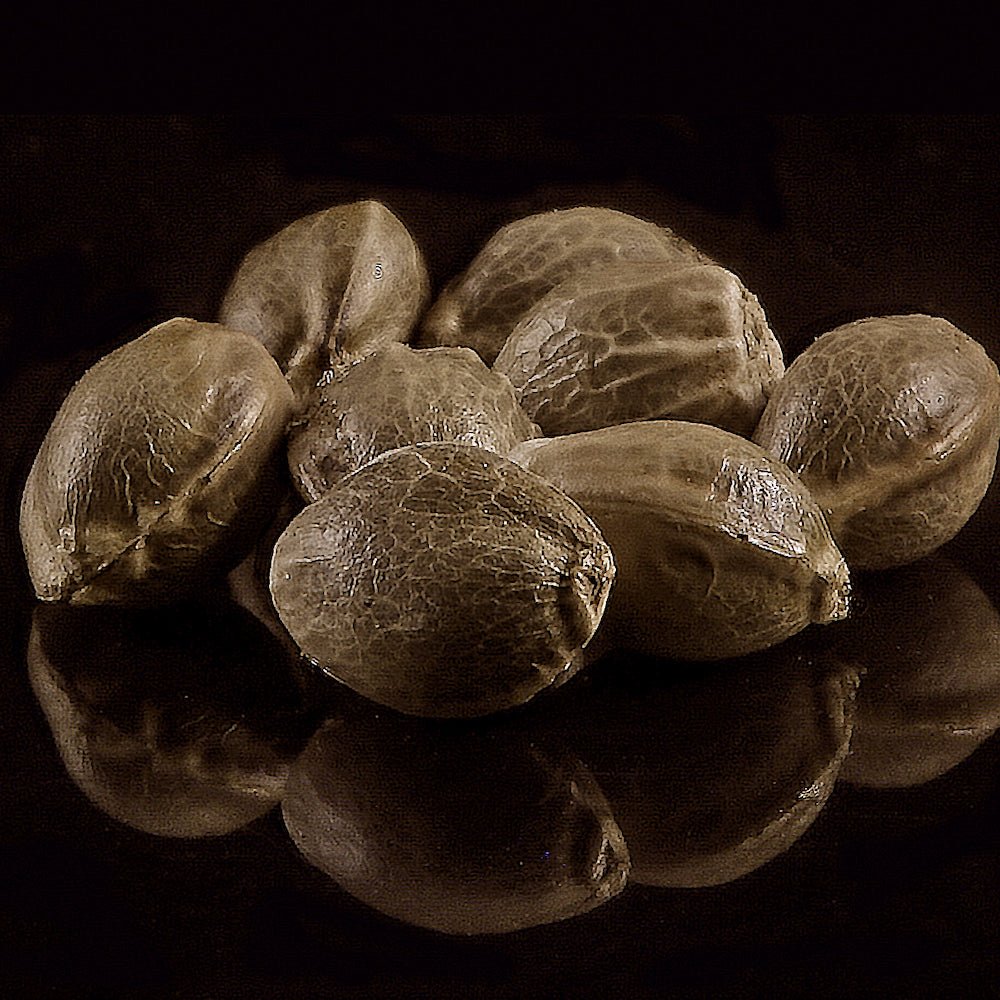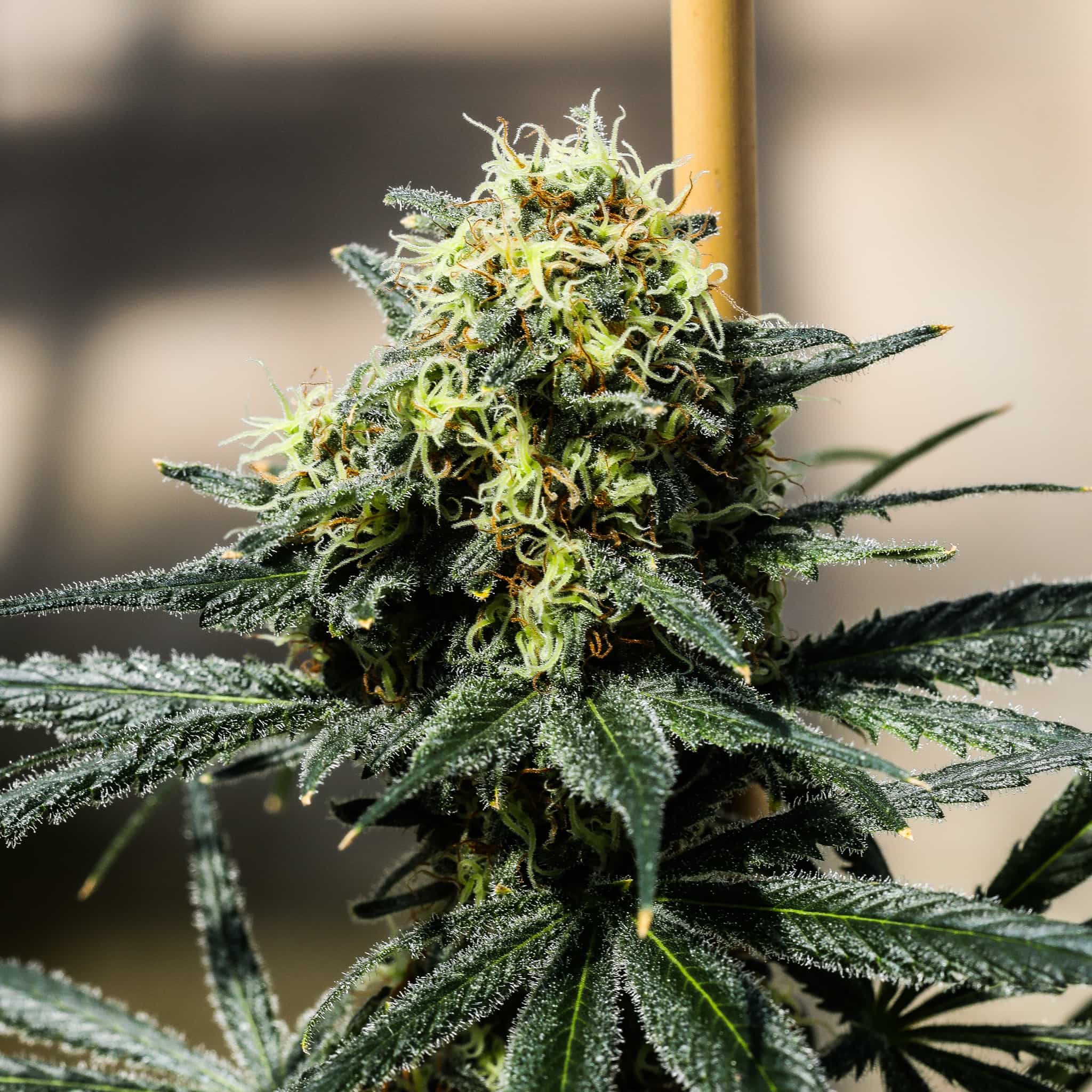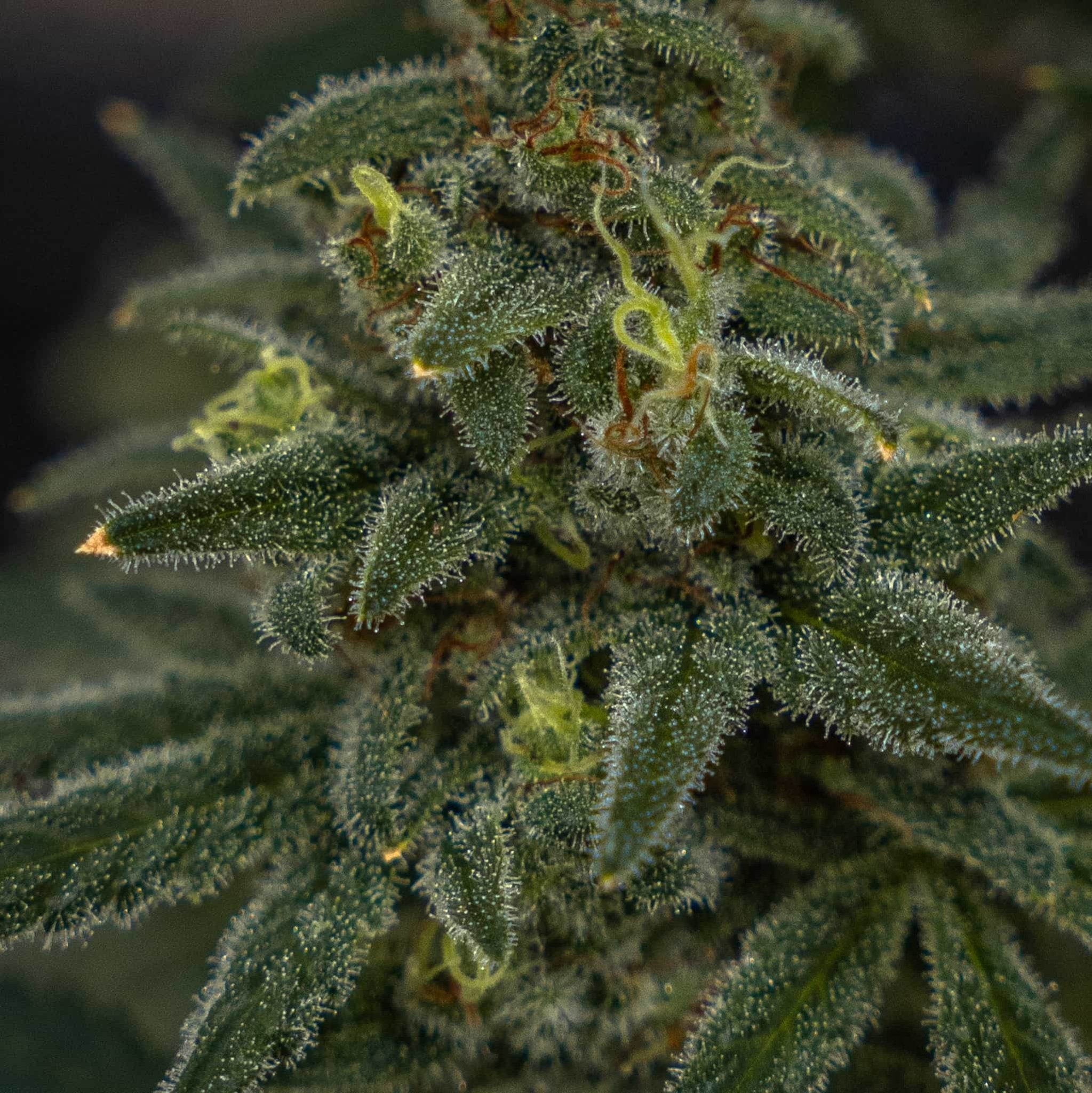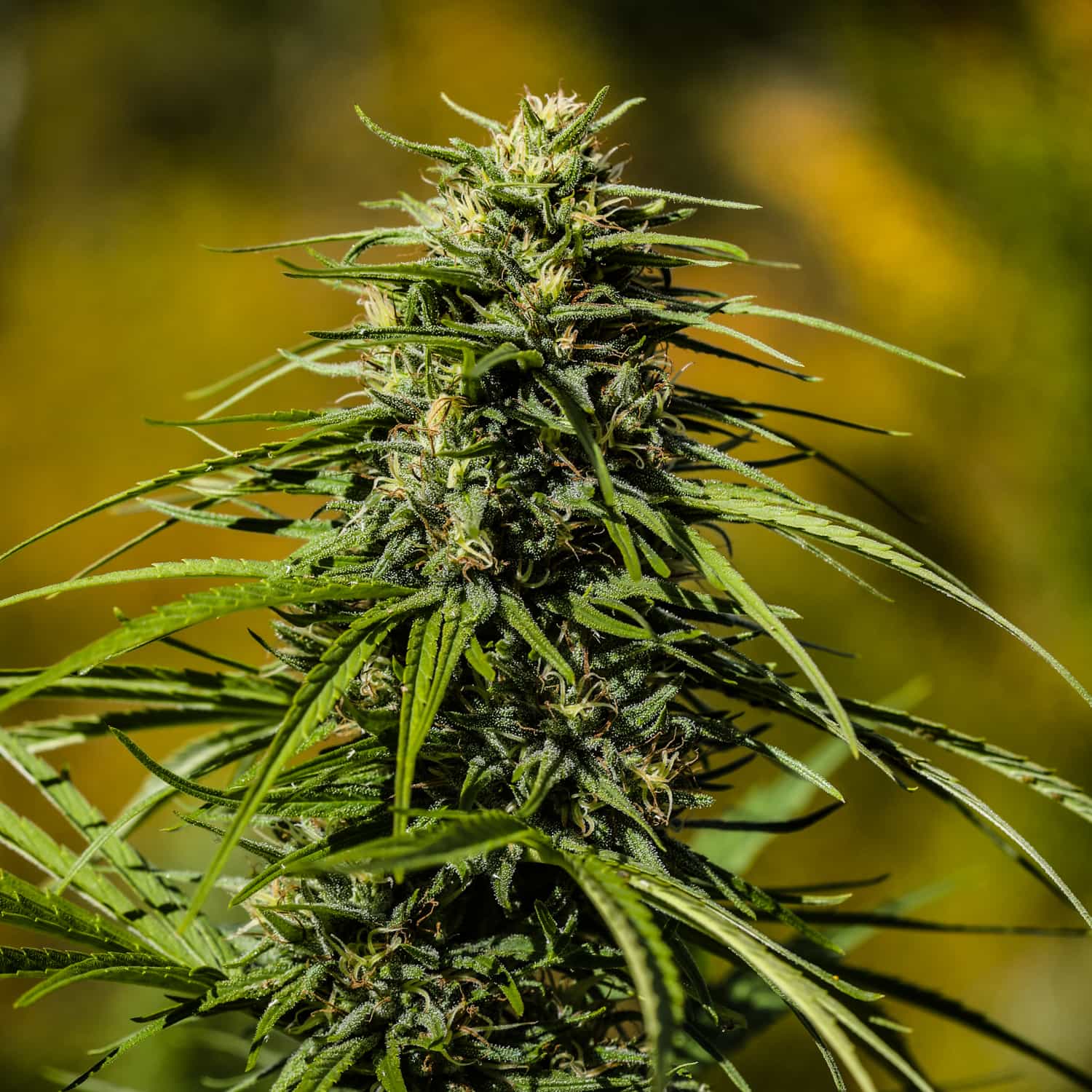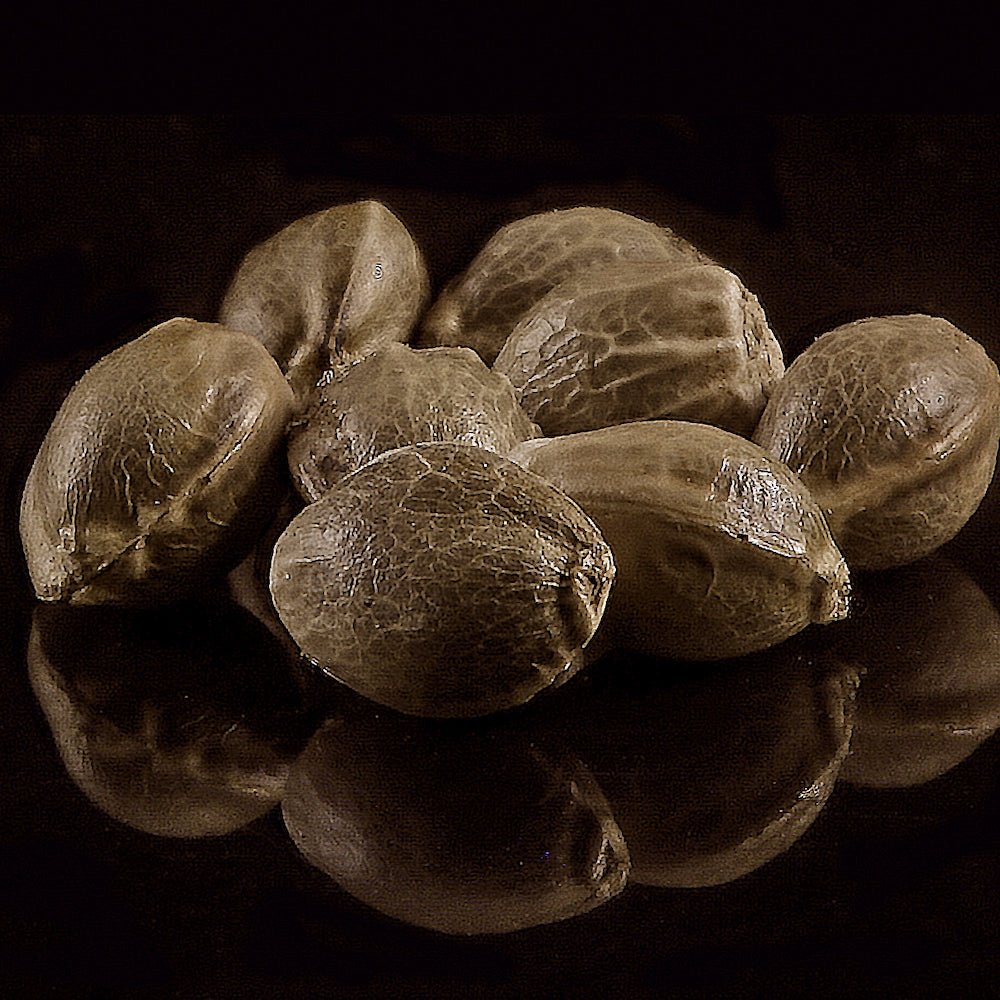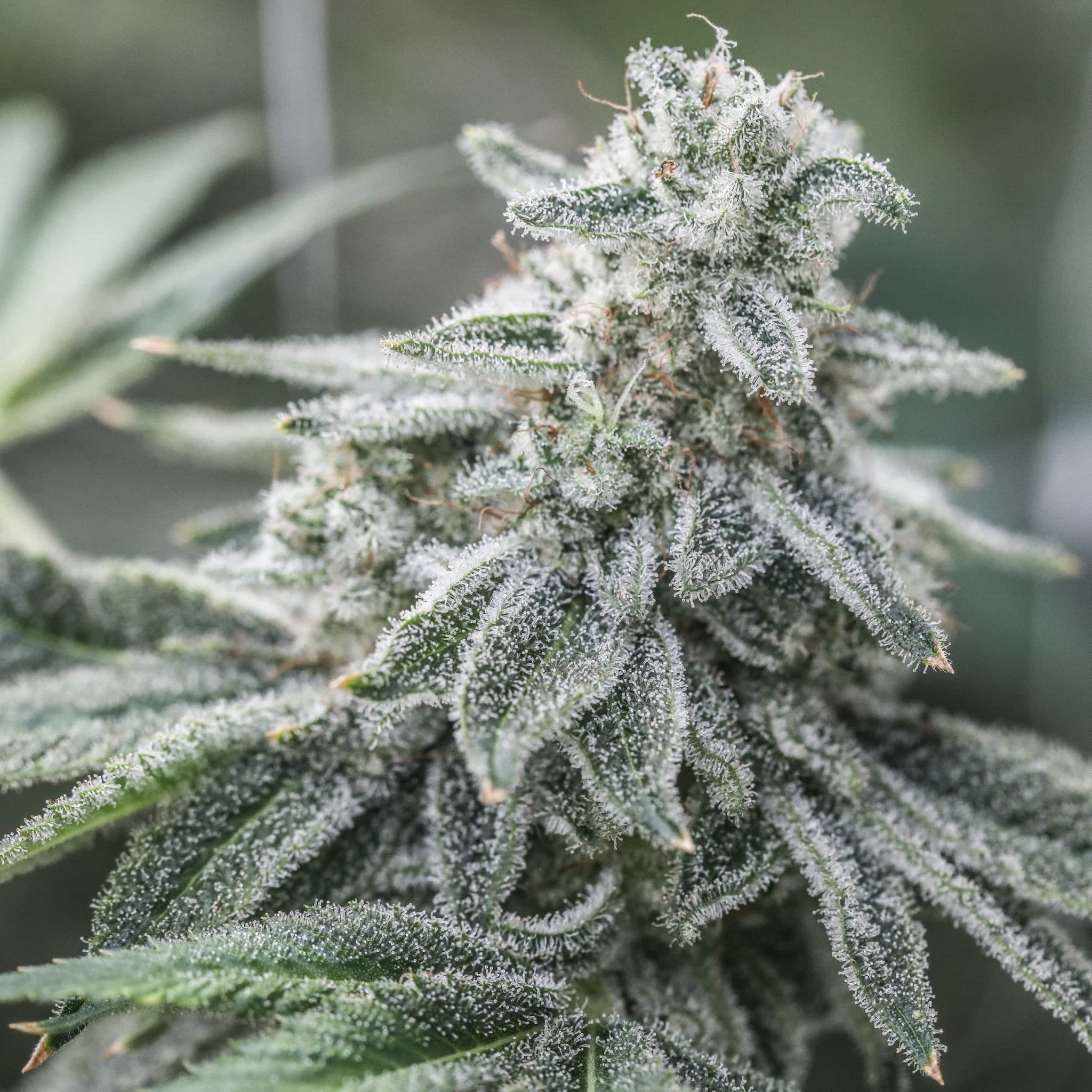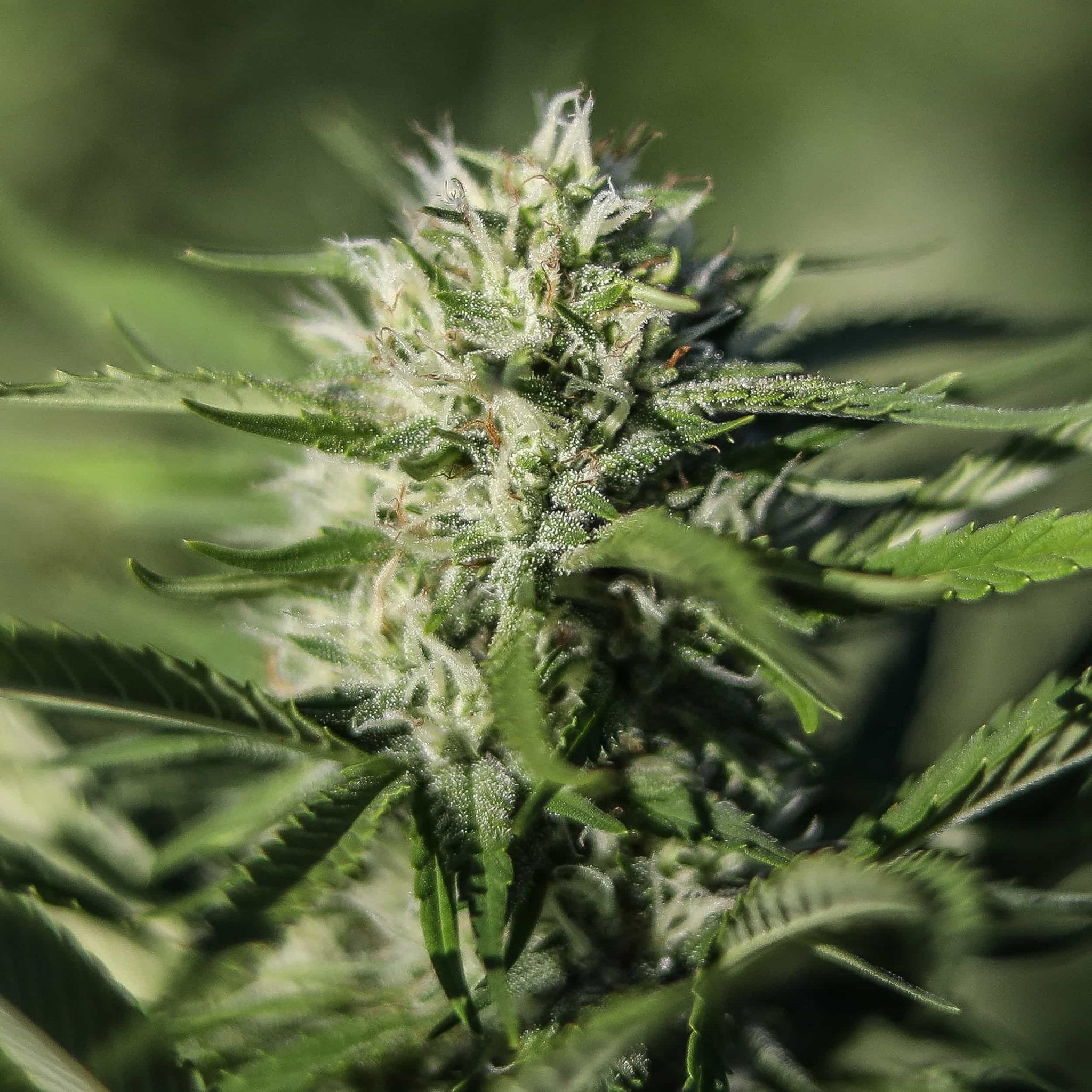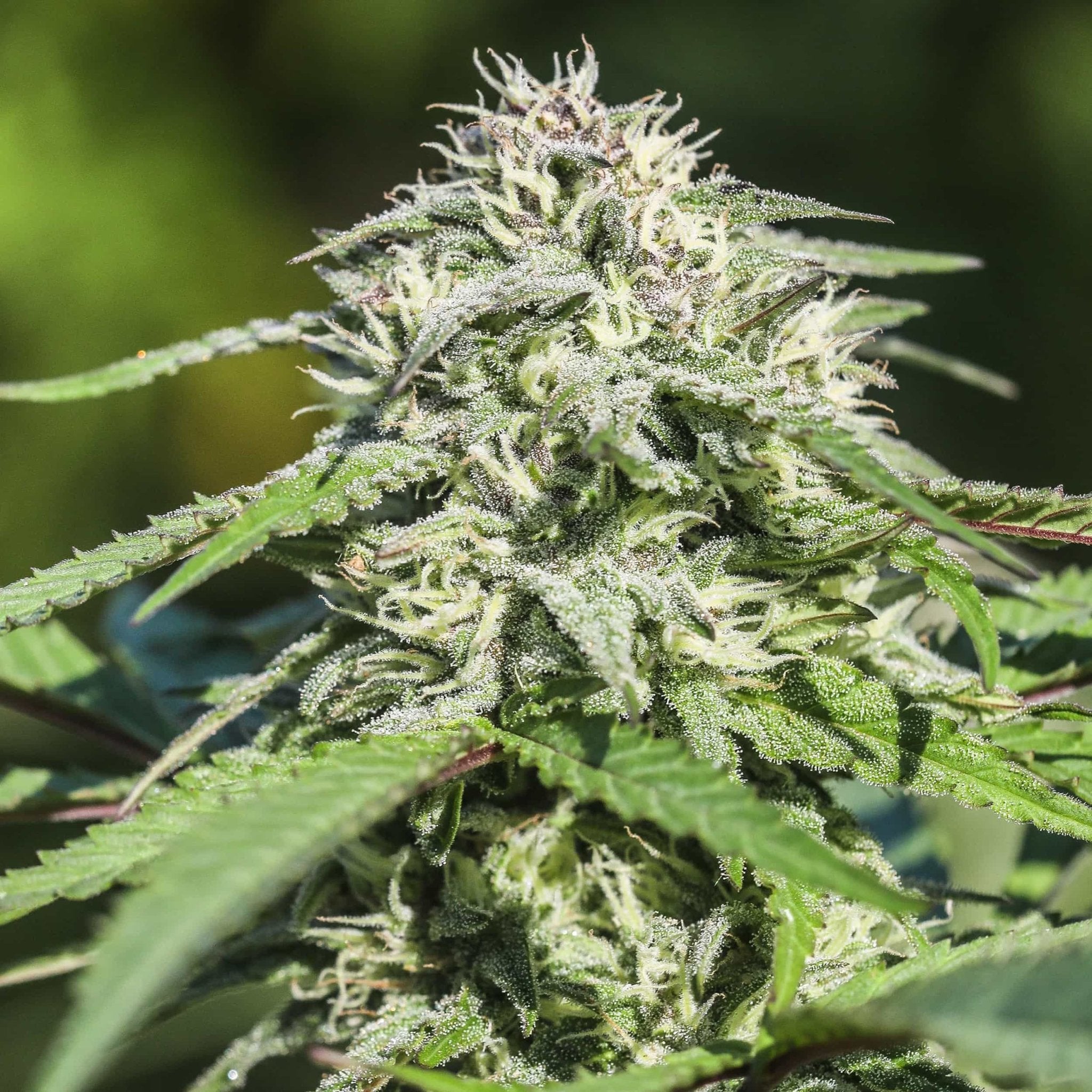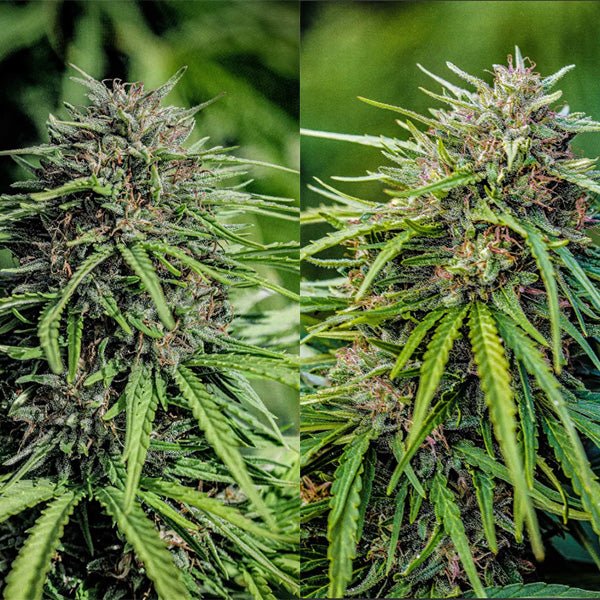Terpenes have been big buzz words in cannabis for almost a decade now. Growers and consumers look to the lab numbers to pick out what flavors and effects they want in a cannabis flower.
But Terpenes are really only a small piece of the pie. There are a vast array of volatile organic compounds in cannabis that are never tested for, but obviously of great if not greater importance than terpenes in the aromas and effects of cannabis.
Terpenes and Aroma
While terpenes can have a large impact on the overall smell and effects of a flower on the consumer, their importance in cannabis is hugely overstressed.
A flower that tests at 5% terpenes can smell less pungent than a flower with 2% terpenes. And there are plenty of flowers with identical terpene profiles that smell drastically different.
Below are two terpene analysis for THC flowers we grew on our farm. One is GMO, which boasts a fierce and savory garlic and onion aroma. The other is for Yuzu, which is one of the most delicious citrus flowers we've ever bred. Both of these are incredibly LOUD, but boast low numbers - and their dominant terpenes do not reflect the smell of the flower AT all.
Note what they should smell like by their terpene profiles. GMO hits high limonene but virtually no citrus aroma. Yuzu has no terpenes that reflect its citrus aromas.
GMO Terpene Profile - Garlic, Mushroom, and Onion

Yuzu Terpene Profile - Citrus Delight

The reason? Terpenes are only responsible for a portion of the aromas in cannabis. There are a myriad of other volatile compounds that make up what you smell and taste in a cannabis flower and many are vastly more important than terpenes.
Terpenes Aren't Responsible For "Skunk"
There are no terpenes that produce the skunky aroma we associate with cannabis. It is actually produced by a compound called 3-methyl-2-butene-1-thiol (321MBT). You can check the published finding here.
Terpenes Don't Make "Gas" or "Diesel"
Nope. Sulphur compounds make that gas, not terps. Abstrax Tech has been doing some incredible research on the topic and its definitely worth checking out.
Terpenes Don't Control Effects Entirely
Myrcene is the most prevalent terpenes in cannabis, and you'll find it as the dominant terpene in most cannabis varieties. Myrcene is known for earthy, musky, aromas and sedative effects. But only a portion of Myrcene dominant varieties are considered sedative by consumers.
Below are terpene profile examples from Lifter, what is considered one of our most uplifting varieties, and Sour Special Sauce, which is considered our most sedative variety. Note the Lifter (0.8%) actually has higher amounts of Myrcene than the Sour Special Sauce (0.6%). Say nothing of the GMO and Yuzu samples mentioned previously. GMO is widely regarded as a heavy "Indica" and Yuzu a "Sativa" while Yuzu boast more Myrcene than GMO.
Lifter Terpenes

Sour Special Sauce Terpenes

You can check out example terpene profiles of all of our varieties here. Note the similarities between many of them, but they all smell and effect consumers differently.
Volatile Organic Compounds and Cannabis
There are a pile of volatile organic compounds in cannabis. The testing required for all of the additional VOC's is incredibly expensive, and even seeing a blip on a graph doesn't truly indicate what something will smell like - or how it will make users fell.
At the end of the day we all smell things differently. Our crew met weekly for 6 months and went over the aromas of a variety of different compounds and cannabis flowers, and while some could agree on what they thought the smell was - we all had slightly different answers most of the time.
The other caveat being every compounds aroma intensity is wildly different. We can use terpinolene for example - even when not present in large quantities it over powers other aroma compounds that are in higher quantities. This is true for every other compound, there can be a tiny amount of one that over powers all the others.
Aldehydes
Rice and Koziel (2015) found that aldehydes play an equal or stronger role in the aromatic presentation of cannabis than terpenes. They found the aldehydes below to be present in concentrations large enough to rival or exceed the olfactory impact of terpenes.
Key Aldehydes in Cannabis
Acetic acid
Acetic acid, also known as ethanoic acid, is an organic chemical compound best recognized for giving vinegar its sour taste and pungent smell. Pure water-free acetic acid (glacial acetic acid) is a colorless hygroscopic liquid and freezes below 16.7°C (62°F) to a colourless crystalline solid.
Acetamide
Acetamide based derivatives are potential anti-microbial, antifungal agents, used as disinfectants. Cigarette smoking triggers acetamide release. It is a minor byproduct of paracetamol degradation. Acetamide is carcinogenic in rats. Taste very bitter; volatilises on exposure to air and sunlight.
Benzaldehyde
Benzaldehyde (C6H5CHO) is an organic compound consisting of a benzene ring with a formyl substituent. It is the simplest aromatic aldehyde and one of the most industrially useful. It is a colorless liquid with a characteristic almond-like odor.
Heptanal
Heptanal or heptanaldehyde is an alkyl aldehyde. It is a colourless liquid with a strong fruity odor, which is used as precursor to components in perfumes and lubricants.
Methylisohexenyl ketone
Pepper, mushroom, rubber - maybe where the funk is in GMO?
2-ethylhexanol
Used in natural plant fragrances, and the aroma has is regarded as “heavy, earthy, and slightly floral” for the R enantiomer and “a light, sweet floral fragrance” for the S enantiomer.
Decanal
Decanal is a saturated fatty aldehyde formally arising from reduction of the carboxy group of capric acid (decanoic acid). It has a role as an antifungal agent, a fragrance and a plant metabolite. It is a saturated fatty aldehyde, a n-alkanal and a medium-chain fatty aldehyde. Waxy, fatty, citrus and orange peel with a slight green melon nuance.
Hexanal
Hexanal, also called hexanaldehyde or caproaldehyde, is an alkyl aldehyde used in the flavor industry to produce fruity flavors. Its scent resembles freshly cut grass, like cis-3-hexenal. It is potentially useful as a natural extract that prevents fruit spoilage.
2-chloroacetophenone
Has a floral odor. Used as a riot control agent. The main uses for 2-chloroacetophenone are in tear gas and in chemical Mace. It is a potent eye, throat, and skin irritant.
Octanal
Octanal is the organic compound, an aldehyde, with the chemical formula CH3(CH2)6CHO. A colorless fragrant liquid with a fruit-like odor, it occurs naturally in citrus oils. It is used commercially as a component in perfumes and in flavor production for the food industry.
Pentanal
Pentanal is the organic compound is an alkyl aldehyde, molecular formula C5H10O. It is used in flavorings, resin chemistry, and rubber accelerators. Its smell is described as fermented, bready, fruity, nutty, berry.
Methyl anthranilate
Main ingredient for some bird repellants. Methyl anthranilate, also known as MA, methyl 2-aminobenzoate, or carbomethoxyaniline, is an ester of anthranilic acid. Its chemical formula is C8H9NO2. It has a fruity grape smell, and one of its key uses is as a flavoring agent.
The Nose Knows
What it all boils down to is our own senses are the only way we can decide whether we like the smell of flower or not - and just like THC content - not by the terpene numbers on a lab report. Our own noses know what we like and what we don't like, and our own personal tastes may have a greater impact on how varieties impact each of us.

